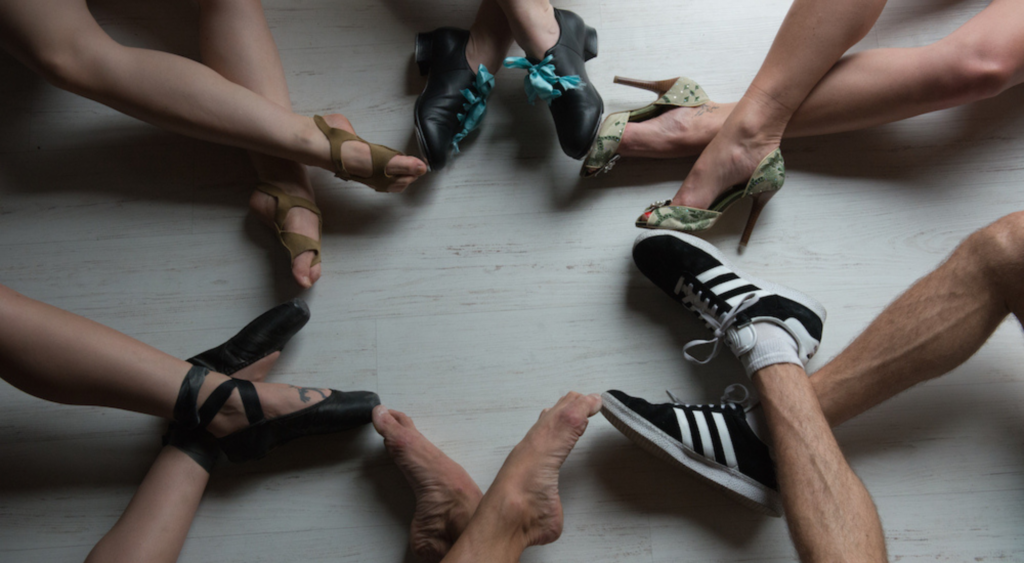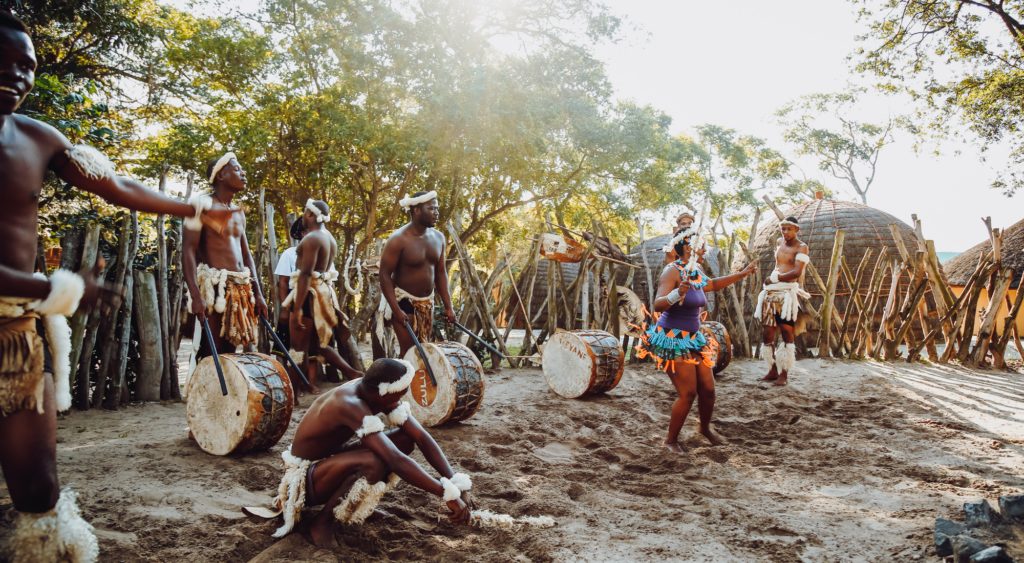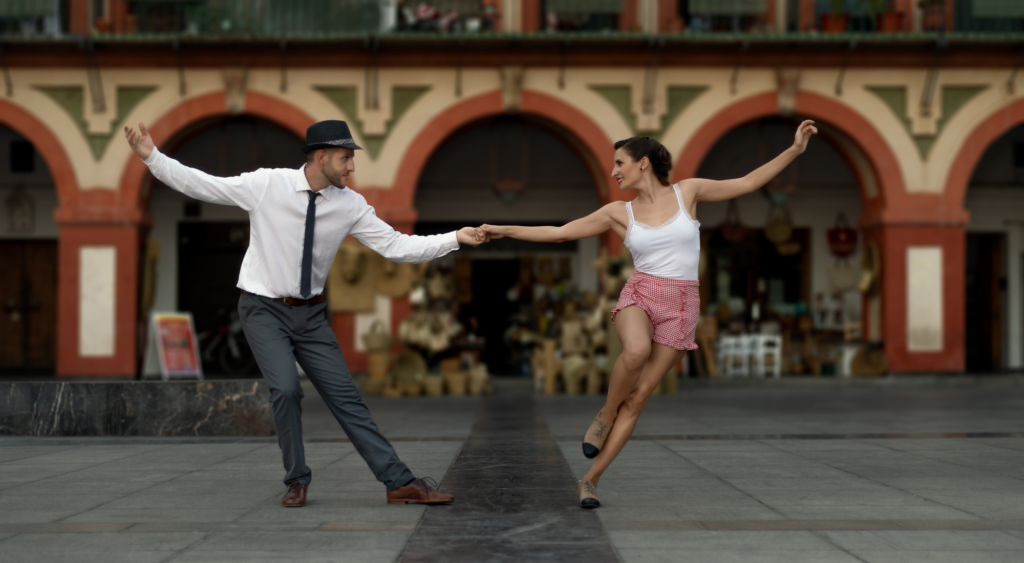There are very few distinct lines when it comes to something so intertwined with our human existence.
Dance is a language that has the ability to connect us to ourselves, one another, and the world around us.
Every culture has unique types of dance and different dance styles. And there are many!
From Hip-hop and ballroom to Bhangra and Soca — the universality of dance transcends time and culture to bring people together in movement and expression.
Read more to learn about the history of dance, the cultural and historical purposes of dance, and five ways to categorize different dance styles.
Table of Contents
- How Many Styles of Dance Are There?
- The History of Dance
- 5 Ways To Categorize Different Dance Styles
- Discover for Yourself: Let Dance Wire Help You Engage in the Universality of Dance

How Many Styles of Dance Are There?
It’s impossible to identify an exact number of dance styles.
Dance has roots in every culture on earth. It is a form of expression that evolves in different ways in the hands of different people. Over time, existing styles of dance evolve and new styles emerge.
Some dance forms even intertwine with others, resulting in fusion styles. Additionally, individual creativity can birth new dance styles or combine existing ones, leading to fresh and innovative forms of expression.
Keep reading as we break down some ways to categorize dance.
The History of Dance
Researchers believe that even before civilization was built, we danced.
Dance is not only one of the oldest art forms, it is one of the oldest languages. The earliest evidence of primitive dance can be traced to cave paintings in India dating back to 8000 BCE. There are also Egyptian tomb paintings dating back to 3300 BCE. Historians theorize that these depictions suggest dance was being used for ritualistic purposes.
Since then, dance has expanded and enriched cultures over the centuries. No matter what the future holds — humanity will continue to dance.
If you are interested in becoming involved in a dance community, Dance Wire in Portland would like to welcome you to explore dance with us!
5 Ways To Categorize Different Dance Styles
#1: Understanding Dance Styles Defined by Purpose
Examining the purpose behind different dance styles is a first step toward a better understanding of the role dance plays.
The purposes behind different dance styles include:
- Performative
- Social
- Competitive
- Communicative
- Sacred
- Ceremonial
- Erotic
- Athletic
- Combative
Let’s dive a bit further into two of the most common styles: participatory and performative dance.
Participatory Dance Styles
Participatory dance types involve participation. This type of dance encourages people to join in rather than just watch. Common places for this dance type might be celebrations, festivals, or cultural events.
Examples of participatory and social dancing could be:
- Square dancing
- Contact Improv
- Ballroom
- Salsa
- Ecstatic
- Cyphers
Performative Dance Styles
Performative dancing – often called Concert Dance – involves dancing for an audience. Sometimes performances occur in a theatre, but not always!
Examples of performative dance include:
- Bharatanatyam
- Ballet
- Flamenco
- Belly Dance
- Aerial
- Competitive dance
There is plenty of overlap and exceptions to these categorizations. For example, Irish Dance can be practiced as a social, competitive, or performative dance.
#2: Place of Origin
Another way to categorize dance styles is by looking at where certain types of dances originated. When dance styles emerge from a city, country, or region in the world, it often carries with it unique cultural elements.
Dance, no matter the origin, often invites others to participate, thereby sharing in the beauty and complexity of other cultures.
Here are a few examples of dance styles that are heavily influenced by their place of origin and culture:
- Flamenco: With the oldest record of flamenco music dating back to 1774, this traditional art form has long been celebrated in its origin place of Andalucia (Southern Spain). It is still beloved and practiced to this day!
- Rueda de Casino: Developed in Havan, Cuba, this dance fuses Salsa with several other types of movement typically improvised by the dancer. ‘Rueda del Casino’ became popular in the 1950s and is generally performed in a circle involving multiple dancers.
- Bhangra: A traditional folk dance that originated in Punjab, Pakistan, Bhangra is used to celebrate the spring harvest during a festival called Vaisakhi. The dance uses a series of leaps, bends, and kicks, often paired with thrusting shoulder movements and outstretched arms.


#3: Historical Period
Historical periods profoundly influence dance and its progression. Various genres exhibit distinct variations that correspond to different historical eras.
Pivotal historical events have also wielded substantial influence over dance’s evolution. The melding of countries through events like war has not only intertwined cultural practices but also fused dance traditions.
To illustrate this, let’s look at one dance style in particular that has evolved throughout history: belly dance. There’s a lot of debate about how to best honor the legacy of belly dance while also integrating it in a way that propels the art form into the future.
Practitioners of belly dance agree that it has its roots in Egyptian culture. Over time, belly dance has been adopted by countries and regions far beyond the Middle East. Today, you’ll find belly dance used by various artists such as Rihanna, Shakira, Beyoncé, and more!
#4: Genre
Genre can be used to describe broad categories of dance that are influenced by:
- Historical period
- Choreography
- Purpose
- Origin
Examples of different genres of dance include:
- Jazz: Combining African and European dance styles, jazz utilizes ballet techniques to create movements with clean lines that move from the chest and hips. The choreography of the genre may also include isolated movements in body parts such as the head, chest, rib cage, and hips.
- Swing Dance: Jazz music influenced this genre of dance. Swing dancing is a social dance that uses the lively beats of jazz and the locomotor movement style of “swinging.” Swing dancing influenced popular dance styles like Charleston or Lindy Hop.
- Hip-Hop: This genre was influenced by street dancing performed by hip-hop dance crews. Hip-hop is a fusion style of dance that incorporates locking, popping, krumping, and breaking movements. Popular hip-hop dances include the Running Man and the Cabbage Patch.
- Ballroom dance: This genre is a broad category that could be used to describe many partnered dance styles. It includes dancing styles like the fox trot, waltz, tango, and many other styles.


#5: Movement Styles/Rep/Choreography
Finally, as you continue to deepen your understanding of dance, you will hear of people who have shifted the course – people who drew from the things around them and carved out a space for something new.
Here are a few popular movement styles that are tied to specific artists:
- Fosse: As a notable dancer, director, and musical writer, Bob Fosse created a distinct dance style known for its use of turned-in knees, rolled shoulders, and “jazz hands”.
- Alvin Ailey: Alvin Ailey combined ballet, jazz, and theater infused with his distinctly black artistic voice to spread awareness of black life and culture in America. His repertory work “Revelations” is widely known and celebrated as a masterpiece and continues to be performed by Alvin Ailey Dance Theatre since its creation in 1960.
- Mr. Wiggles: As a street dancer, Mr. Wiggles is most associated with the style of “popping.” Popping is a movement style that uses sudden tensing and releasing of muscles to move to the beat of the music.
Discover for Yourself: Let Dance Wire Help You Engage in the Universality of Dance
Dance Wire celebrates dance in all its forms, for all its purposes, origins, and history.
We are a community that wants to share with you the universality of dance. Whether you are a professional or a newcomer, we are sure to have something for you on our Dance Curious dashboard.
Dance Wire may help you engage in the universality of dance by:
- Taking a class
- Going to a show
- Listening to our podcast
- Joining the Curious Club

